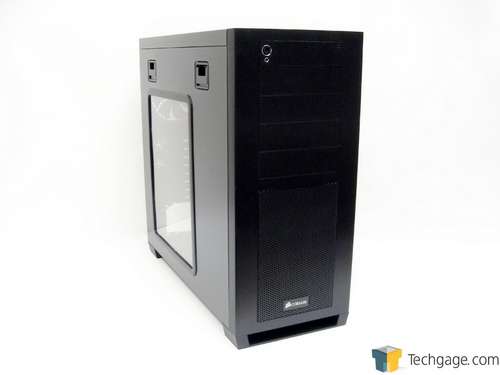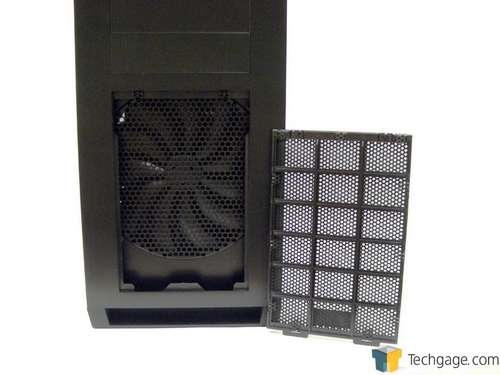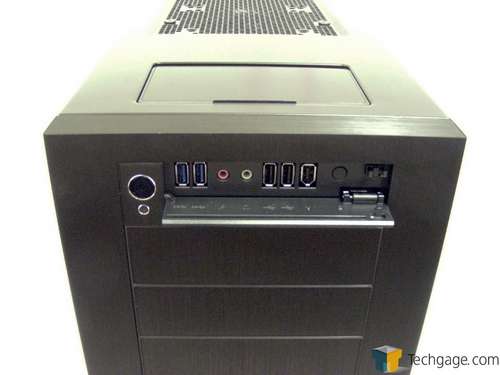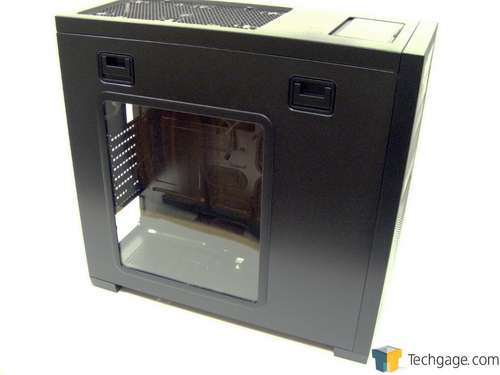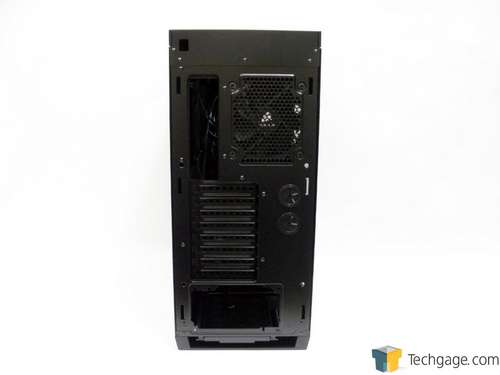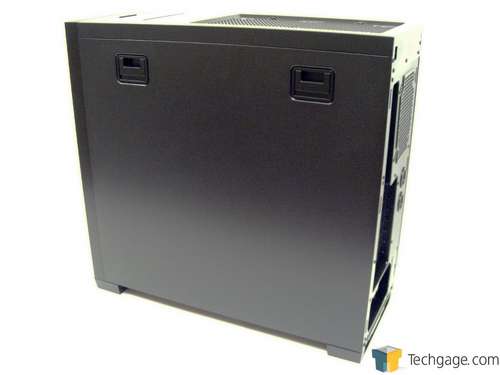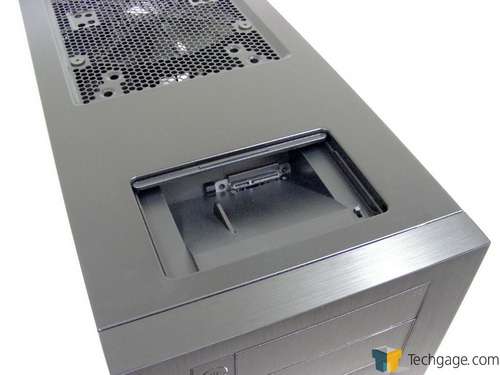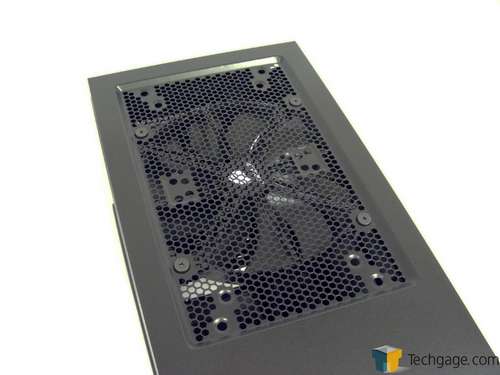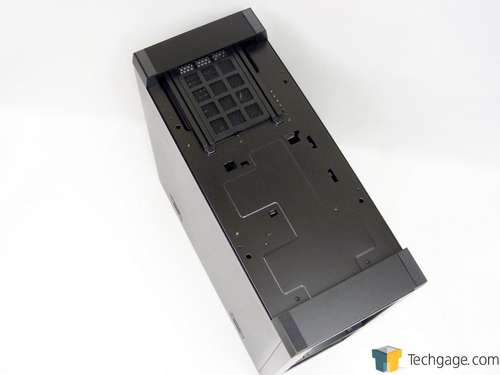- Qualcomm Launches Snapdragon 4 Gen 2 Mobile Platform
- AMD Launches Ryzen PRO 7000 Series Mobile & Desktop Platform
- Intel Launches Sleek Single-Slot Arc Pro A60 Workstation Graphics Card
- NVIDIA Announces Latest Ada Lovelace Additions: GeForce RTX 4060 Ti & RTX 4060
- Maxon Redshift With AMD Radeon GPU Rendering Support Now Available
Corsair Obsidian 650D Mid-Tower Chassis Review
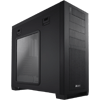
When Corsair released its Obsidian 800D full-tower nearly two years ago, it was the company’s first chassis, but still managed to set standards. For those who were hoping for much of the same aesthetic value and design features in a smaller package, Corsair delivers with its 650D, a premium-priced offering at $180.
Page 1 – Introduction
As hardware reviewers, it’s our job to remain impartial about the products that we look at – but that doesn’t mean we can’t get friggin’ excited! This is Techgage’s resident case freak, about to have a look at the long-awaited Corsair Obsidian 650D mid-tower. I have been nearly rabid about this case since I saw the first pictures at this year’s CES in Las Vegas.
The 650D is modeled after the Obsidian 800D and 700D, but is in a much smaller package supporting ATX and mATX motherboards. The outer styling is quite subdued compared to many cases on the market today, but on the inside it offers many features that made the larger versions so popular – without taking up extra real estate. It’s time to dive in and have look to see if the 650D can keep up with its bigger brothers.
The case comes wrapped in a cloth bag to help protect an impeccable finish. Even though the 650D body is made of steel, the front panel is aluminum and has a brushed finish. Making up the bottom half of the front panel is a large vent that hides a 200mm fan. The entire vent, which features an air filter, can be removed by pushing in at the top and lifting it away. Towards the bottom of the vents is a nice shiny Corsair logo, just in case you forget which company makes the case.
At the very top left is the power button and hard drive activity LED, both of which glow white. Both have a very thin piece of silver trim around them so there is a little bit of style to go along with the substance. To the right is a flip-down cover that opens when the top right corner is pressed. Behind it starting on the left are two USB 3.0 connections, standard 3.5mm microphone and headphone jacks, two USB 2.0 connections and an IEEE 1394 port, finishing up with the reset button on the very right. Below this are the four 5.25″ drive covers that can be removed by pushing in on small clips from inside the drive bays.
Over on the left side of the case at the top are two quick-release latches. Anybody who is routinely opening their case to swap out hardware will find these a welcome addition. Just pull down and the panel can be lifted away cleanly. The left panel also features a large, rectangular window so that users can show off what’s under the hood. The window is trimmed with plastic for a super-clean, finished look.
The back of the 650D has a small hole in the top left corner for two USB 3.0 cables to be fed through. These cables can be connected to the rear ports on the motherboard I/O in order to provide connectivity for the front panel. Below this are the motherboard I/O opening and a 120mm fan to exhaust warm air out the back of the case. Further down are 8 vented PCI slot covers to allow for some serious triple-GPU setups. To the right of the slot covers are two holes with rubber grommets to run hoses for water cooling and the opening for the power supply at the very bottom.
Nothing much to report on the left side panel other than the same quick release latches at the top.
Up on the top panel towards the front is another cover that slides back under the panel itself. This hides a hot-swap SATA hard drive bay that can accept either 3.5″ or 2.5″ drives – provided the motherboard supports AHCI. This is a great alternative to the 800D that features front-loaded hot-swap bays. At the front right corner of this bay is the four channel, 3 speed fan controller that some may miss due to the small size. The controller allows users to choose between silence and performance by selecting either low, medium or high speed settings.
Towards the back is the grill that shows off the second 200mm fan to exhaust warm air. If needed, the stock fan can be replaced with up to two 120mm or 140mm fans with the option of installing a 240mm radiator for water cooling.
Flipping the case over shows a bit of a curious combination of feet. The front are textured rubber to help reduce any sliding or slipping while the rear feet are hard plastic. This was likely chosen to allow the case to move easily if the front is raised up seeing how the front rubber feet grip surfaces very well. At the very back is a removable air filter to help keep dust out of the power supply. A simple tug on the filter and is all it takes to slide it out the back.
While the outside may not seem too different than the larger versions, it’s time to strip the case down and have a look at the inside.
Support our efforts! With ad revenue at an all-time low for written websites, we're relying more than ever on reader support to help us continue putting so much effort into this type of content. You can support us by becoming a Patron, or by using our Amazon shopping affiliate links listed through our articles. Thanks for your support!




